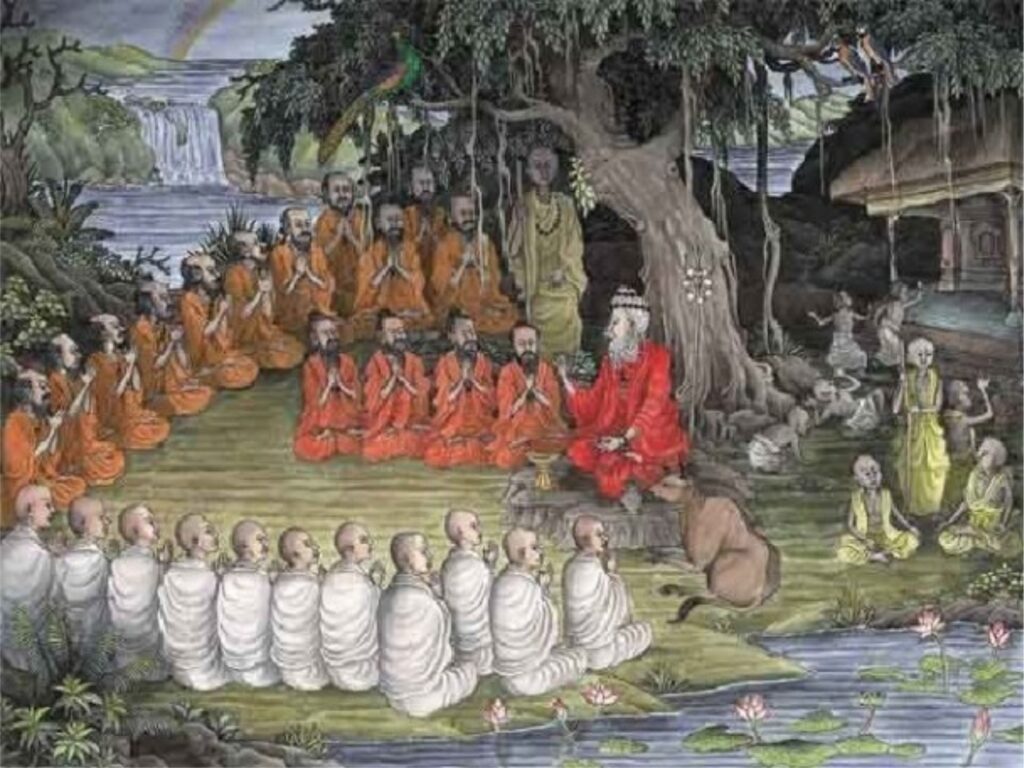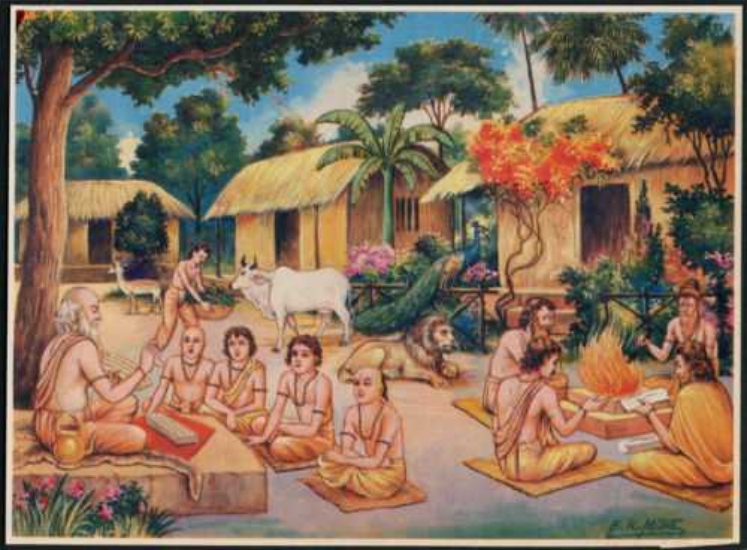![]()
Ancient India, renowned for its luminous minds, splendid history, and illustrious rulers, boasts a rich heritage in the realm of education. At the heart of this legacy is the fascinating concept of Gurukuls – schools where students would leave their homes to reside with their revered teachers, embarking on a journey to acquire knowledge and wisdom that encompassed both academics and life skills. This age-old system laid the foundation for India’s organized and culturally enriched education system, a system that has significantly contributed to the nation’s glory.
Gurukuls: The Epicenters of Learning
Gurukuls, often referred to as the cradles of wisdom, were the quintessential Indian schools. These institutions fostered a unique teacher-student relationship and introduced the concept of hostels, where students lived with their Gurus (teachers) in an immersive learning environment. Throughout history, Gurukuls welcomed various illustrious figures, including the Pandavas, the Kauravas, Lord Rama, and Lord Krishna, all of whom emerged as paragons of knowledge and virtue.
The Three Pillars of Gurukuls
The foundation of Gurukuls rested on three fundamental pillars: the Acharya (teacher), the Shishya (student), and the ashram (the place of interaction). The term “Gurukul” derives from “Guru,” meaning teacher, and “Kula,” signifying clan or family.
Caste-Based Admission
Intriguingly, admission to Gurukuls was caste-dependent. Brahmin, Kshatriya, and Vaishya students gained entry at the ages of 6, 8, and 11, respectively, marked by elaborate Yajnopavita, Upanayana, or Upavita ceremonies, complete with sacrificial rituals. Once enrolled, they lived as Brahmacharis, receiving education under the watchful guidance of their Guru.
Gurukul Administration
Traditionally, Brahmin households oversaw the administration of Gurukuls, which could be found both within and outside villages and towns. Remarkably, these institutions attracted students primarily through word of mouth, ensuring that financial status posed no barrier to learning. Gurukuls welcomed deserving students from all backgrounds, and the financial aspects were managed through Dakshina (fees), student services, subsidies from kings and governments, and generous donations from the community.
The Rigorous Daily Routine
Gurukul students adhered to a strict daily regimen. Their day began at 5 AM with Gangasnan (ritual bathing) and Suryanandanam (sun salutation). Subsequent activities included the chanting of the “Gayatri Mantra,” Surya Namaskar, Yoga Asanas, and morning classes until midday. Students routinely practiced Madhukari, the act of begging for alms, before an hour of rest, followed by evening classes until sunset. The day concluded with Sayam Sandhya, where hymns were sung, snacks were provided, dinner was served, and students were instructed to retire for the night.
Interactive Teaching Methods
One of the distinctive features of Gurukul education was the Guru’s method of testing students before each lesson. A routine oral revision test, conducted 10-15 minutes before class, assessed the students’ understanding. This ensured that students progressed at their own pace, without being held back by others.
A Multifaceted Curriculum
Gurukuls offered a well-rounded curriculum that extended beyond Vedas and Upnishads. Subjects covered ranged from mathematics, astronomy, science, languages, and medicinal theories to scriptures like Vedas, Upnishads, Brahmanas, and Dharmasutras. Students also delved into renowned scholarly texts, including those by Aryabhatt and Patanjali. Additionally, Gurukuls imparted practical knowledge through subjects like Yogic sciences, martial arts, and sports, fostering holistic development.
Legacy and Influence
The legacy of Gurukuls extended far and wide, inspiring the establishment of medieval universities like Nalanda, Taxila, Vikramshila, and Vallabhi. References to these ancient centers of learning can be found in the scriptures of scholars and travelers, including Huwein Tsang. Today, Varanasi remains a place where echoes of Gurukul education can still be heard, with numerous Gurukuls, Pathshalas, and Annakshetras dotting the city.

A Glimpse into History
Indian epics, such as the Ramayana, provide glimpses into the significance of Gurukuls. Sage Vashistha’s ashram, where King Dilip performed austerities, and Bharadwaja Muni’s ashram in Prayag are iconic examples. Even Lord Rama received his education at the ashram of Rishi Vashistha, while Lord Krishna followed the Gurukul system, being educated by Rishi Sandipani. The stories of Krishna, Balaram, and Sudama unfolded within the hallowed halls of Sandipani’s Gurukul.
Transformation and Challenges
As India transitioned through the ages, its education system evolved. While Gurukuls exemplified a unique and effective system, the changing societal landscape, the advent of formalized schooling, and the dynamics of a modern world have reshaped education. Today, India’s educational institutions blend traditional wisdom with contemporary methods to prepare students for the challenges of the 21st century.
Ancient Universities and Their Decline
In addition to Gurukuls, ancient India was home to renowned centers of learning like Nalanda, Taxila, Vikramshila, and Vallabhi. These universities attracted scholars from across the world and were renowned for their excellence in education. However, over time, factors such as invasions, destruction, and neglect contributed to their decline. The sack of Nalanda by invaders like Bakhtiyar Khilji in the 12th century marked a tragic turning point, leading to the destruction of invaluable libraries and scholarly works.
Conclusion
Gurukuls and ancient Indian universities were instrumental in shaping the nation’s educational ethos. These institutions, with their unique blend of holistic education, wisdom, and discipline, have left an indelible mark on India’s educational heritage. While times have evolved, their legacy continues to inspire and guide the nation’s pursuit of knowledge and enlightenment in the modern world.
Reference:







